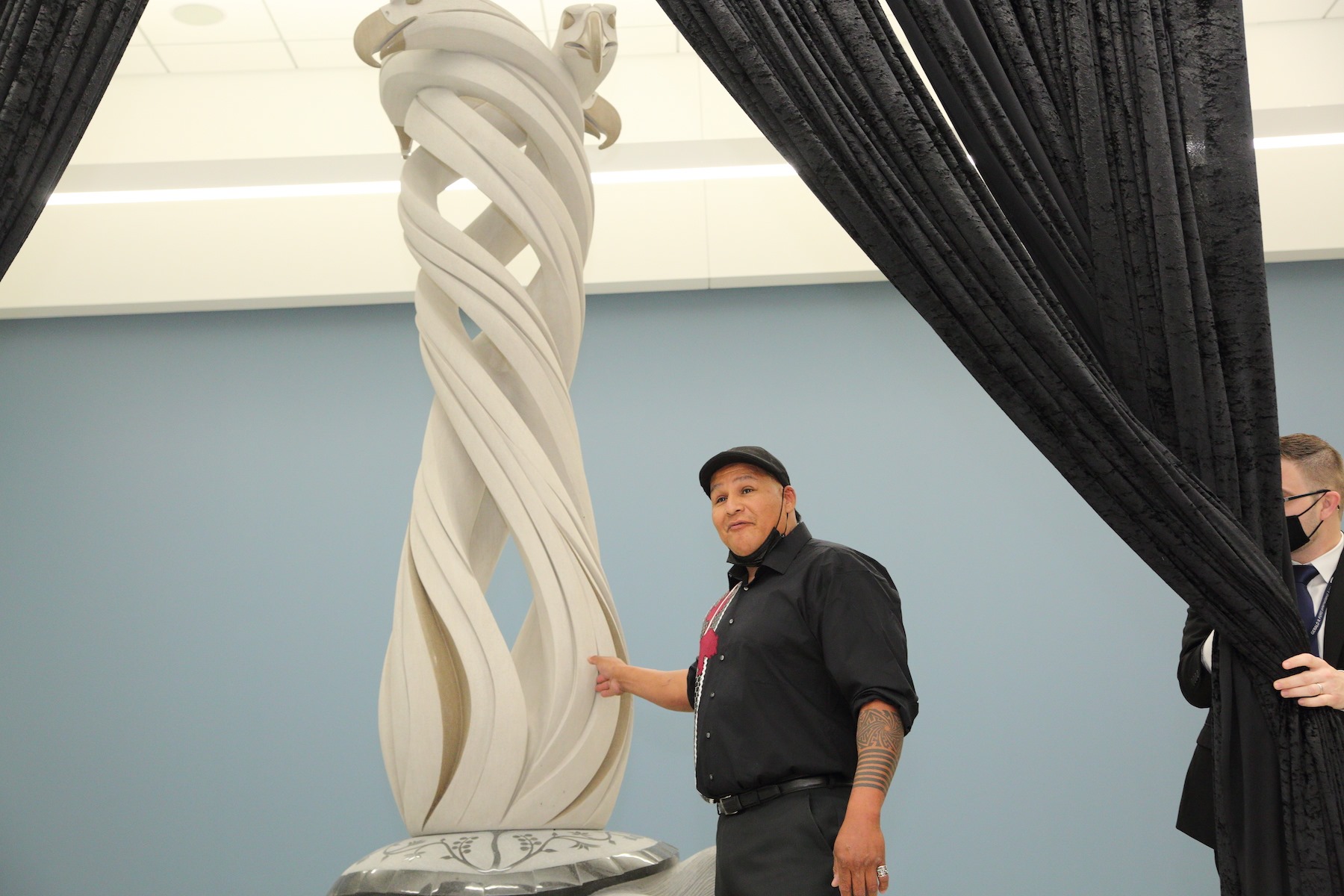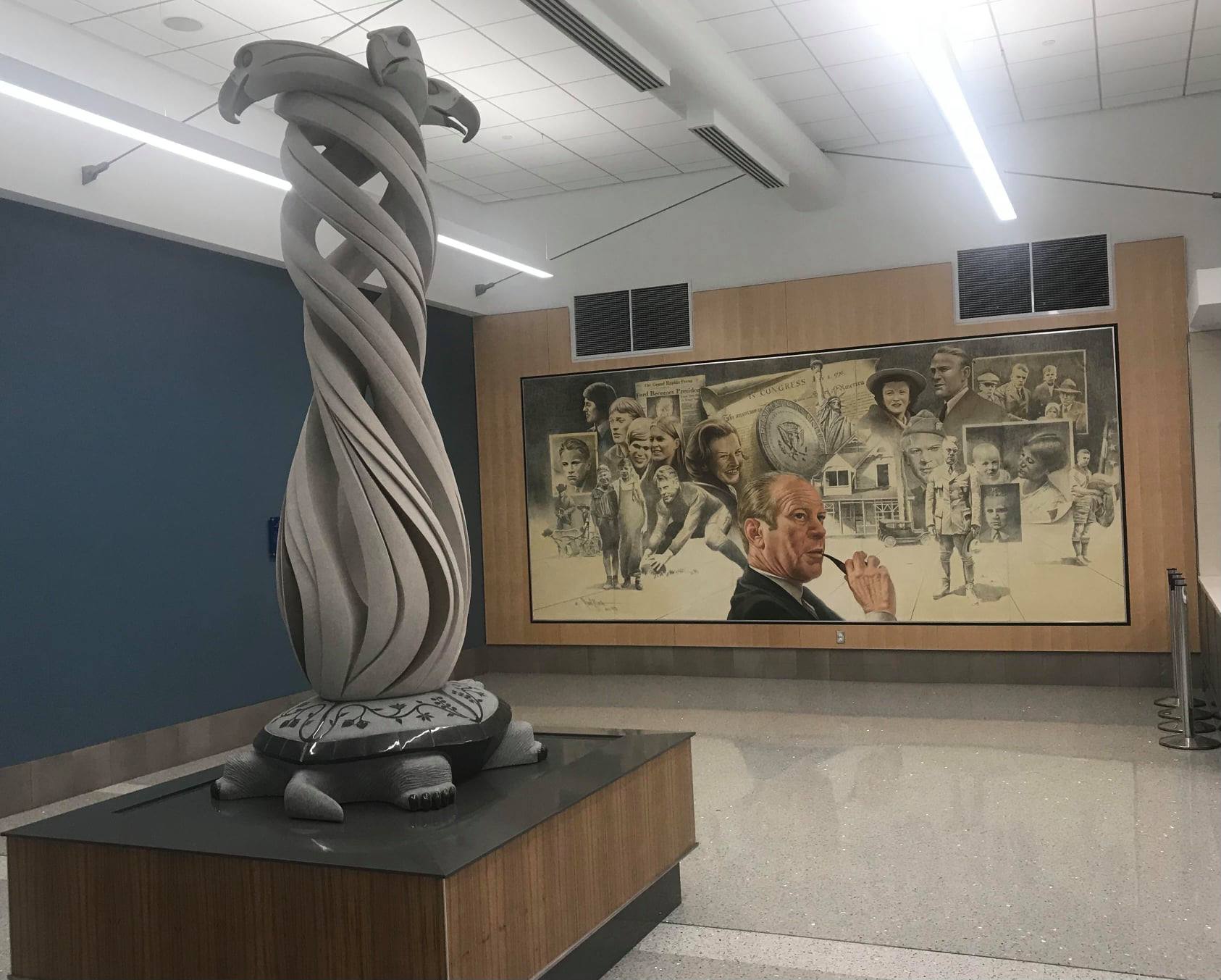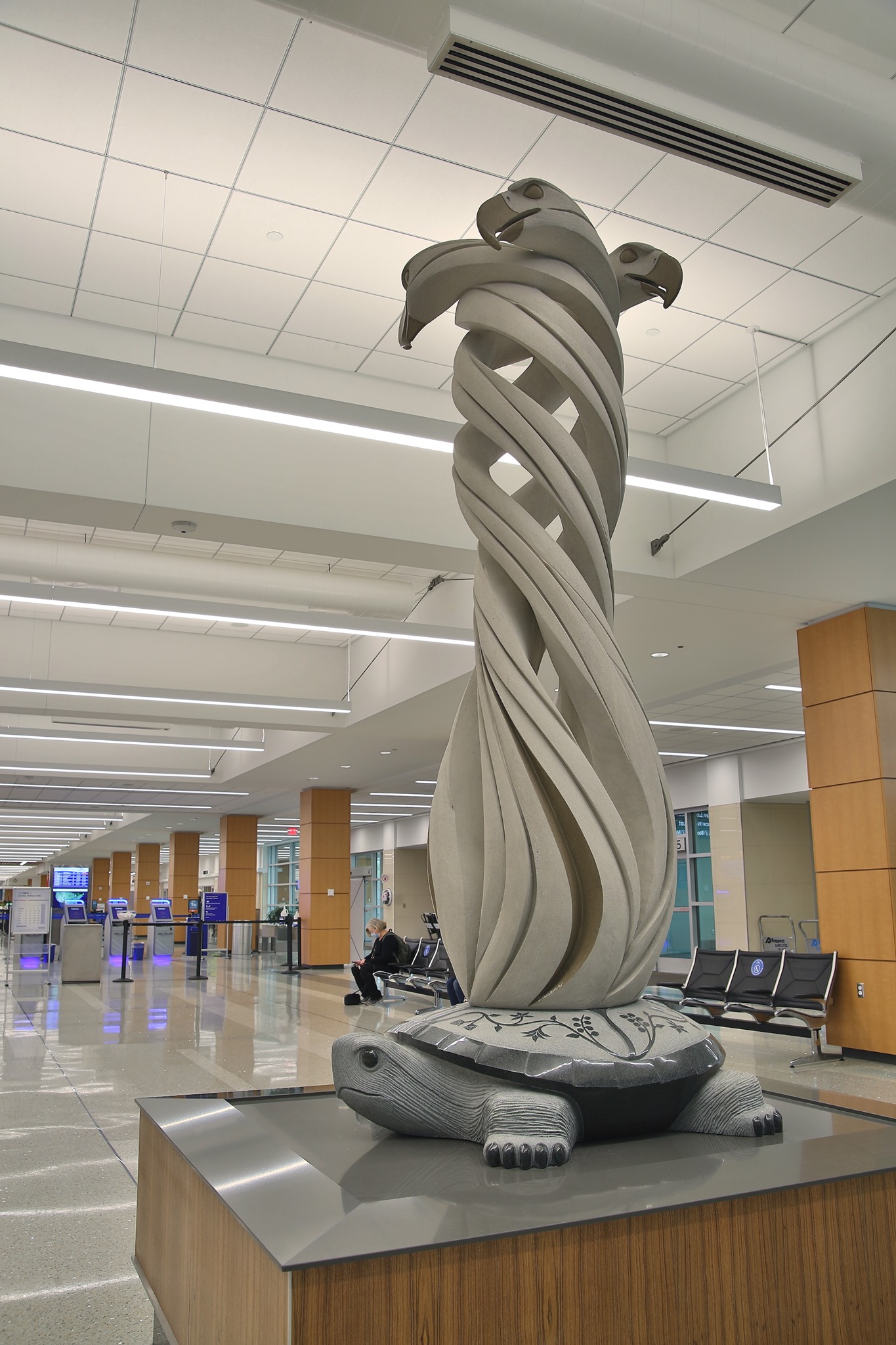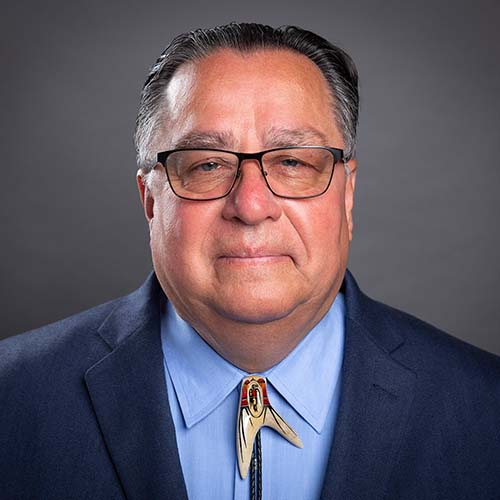
- Details
- By Levi Rickert
GRAND RAPIDS, Mich. —Travelers in and out of the Gerald R. Ford International Airport, West Michigan’s largest airport, now have an opportunity to understand the rich connection the region has to its Native population, which has its roots in Michigan for thousands of years.
On Wednesday, airport officials unveiled the 9-ft. tall “Aankobiisinging Eshki-kakamigak,” or “Connection to Creation,” carved sculpture that was formed from black granite and Indiana limestone and features important elements in Anishinaabe teachings. The sculpture was carved by award-winning Anishinaabe sculptor Jason Quigno.
“One of my purposes in life as an Anishinaabe man and sculptor is to honor my ancestors,” Quigno said. “My intention is to share a portion of the Anishinaabek’s beautiful history, our stories and rich traditions in stone.”

Quigno, a tribal citizen of the Saginaw Chippewa Indian Tribe, who has been carving stone since he was 14, is a life-long resident of Michigan and is a direct descendant of Chief Cobmoosa, also known as the Great Walker, one of the most recognized nineteenth-century Grand River Ottawa leaders.
The sculpture contains a lot of Anishinaabe symbolism carved in majestic work of art.
Its base features a turtle with Anishinaabe floral design representing the four cardinal directions – north, or giwaydoonig, east, or wabunnoong, south, or zhawanoog, and west, or ningabeunoong.
On top of the turtle’s shell sits a second feature of fire and flames flowing upward in a spiral pattern suggesting smoke. The pinnacle features four eagles with their mouths slightly open.
Quigno uses his art to educate those unfamiliar with Native American culture. He further explained the various elements of his work and their significance in Anishinaabe culture.

“The turtle, or mizkeekay, and its shell represent the land we inhabit. She is the base the fire and flames sit upon,” he said. “Fire, or ishkoday, is important to the Anishinaabek – through the fire and smoke, our prayers flow up to the creator. Finally, the four eagles, or migiizis, represent and acknowledge the four cardinal directions. The eagles are said to carry those prayers to the creator.”
The sculpture is located near the entrance of the airport to the left of the Southwest Airlines ticket counter. The work was commissioned by the Airport’s art committee.
Quigno says this piece is a point of pride for Native Americans in the community.
“I made this for the Airport and its visitors, but also for my Anishanabe people, for them to feel proud,” Quigno explained. “One of their own is making a monument to honor them.”
The sculpture was installed at the airport on Earth Day. It was originally scheduled for November in time for Native American History Month but was postponed due to COVID-19 restrictions.
More Stories Like This
A Native American Heritage Month Playlist You Can Listen to All Year Long11 Native Actors You Should Know
Five Native American Films You Should Watch This Thanksgiving Weekend
Heavy metal is healing teens on the Blackfeet Nation
Over 150 Tribal Museums Participate in Fourth Annual Celebration of Native Life
Help us tell the stories that could save Native languages and food traditions
At a critical moment for Indian Country, Native News Online is embarking on our most ambitious reporting project yet: "Cultivating Culture," a three-year investigation into two forces shaping Native community survival—food sovereignty and language revitalization.
The devastating impact of COVID-19 accelerated the loss of Native elders and with them, irreplaceable cultural knowledge. Yet across tribal communities, innovative leaders are fighting back, reclaiming traditional food systems and breathing new life into Native languages. These aren't just cultural preservation efforts—they're powerful pathways to community health, healing, and resilience.
Our dedicated reporting team will spend three years documenting these stories through on-the-ground reporting in 18 tribal communities, producing over 200 in-depth stories, 18 podcast episodes, and multimedia content that amplifies Indigenous voices. We'll show policymakers, funders, and allies how cultural restoration directly impacts physical and mental wellness while celebrating successful models of sovereignty and self-determination.
This isn't corporate media parachuting into Indian Country for a quick story. This is sustained, relationship-based journalism by Native reporters who understand these communities. It's "Warrior Journalism"—fearless reporting that serves the 5.5 million readers who depend on us for news that mainstream media often ignores.
We need your help right now. While we've secured partial funding, we're still $450,000 short of our three-year budget. Our immediate goal is $25,000 this month to keep this critical work moving forward—funding reporter salaries, travel to remote communities, photography, and the deep reporting these stories deserve.
Every dollar directly supports Indigenous journalists telling Indigenous stories. Whether it's $5 or $50, your contribution ensures these vital narratives of resilience, innovation, and hope don't disappear into silence.
 The stakes couldn't be higher. Native languages are being lost at an alarming rate. Food insecurity plagues many tribal communities. But solutions are emerging, and these stories need to be told.
The stakes couldn't be higher. Native languages are being lost at an alarming rate. Food insecurity plagues many tribal communities. But solutions are emerging, and these stories need to be told.
Support independent Native journalism. Fund the stories that matter.
Levi Rickert (Potawatomi), Editor & Publisher

